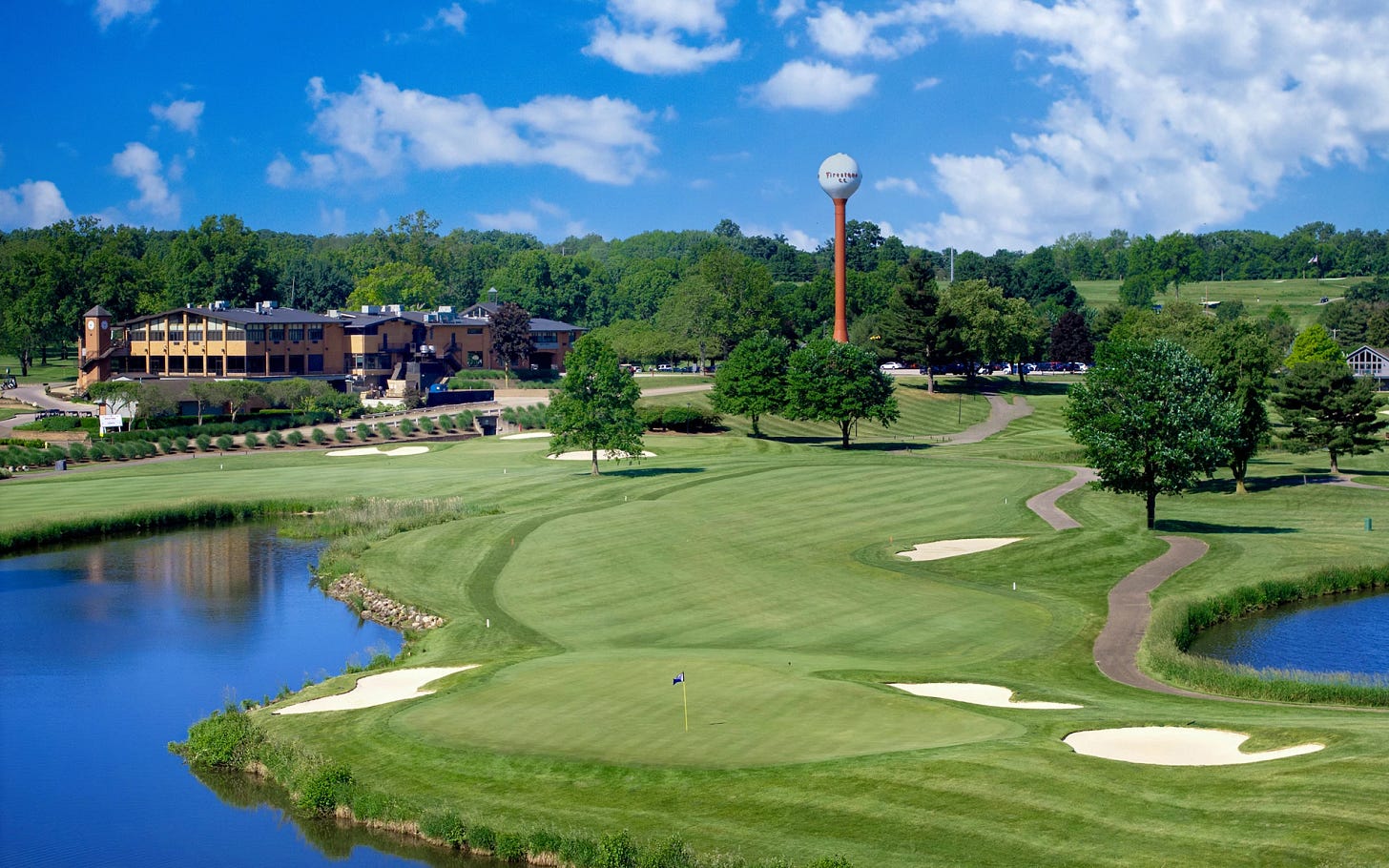What Would Your Bandon Be?
This one is for the golfers. Play your own game.
In 1999, Mike Keiser, an entrepreneur known for his greeting card business, Recycled Paper Greetings, opened Bandon Dunes, a links style golf course located in the coastal Oregon town of Bandon. Bandon has become an iconic spot in the golf world and spawned a whole generation of courses that have been developed with a similar ethos across the globe (see courses like Cabot Cliffs, Barnbougle Dunes, and Sand Valley). What’s amazing is that no one involved in the original project had prior experience in golf course development. Furthermore, it was definitely not obvious that people would fly to a small town in coastal Oregon, walk courses without golf carts, and actually enjoy the experience. And yet, it worked. Today, Bandon has produced an experience that has created meaningful and lasting memories for thousands of golfers. In an article for Fore Magazine celebrating Bandon’s 25th anniversary, writer Joe Passov, highlighted what makes the experience so special:
“Combined with the wow factor of the individual courses is the golf experience itself. Whether on a rare, benign, sunny day, or in the midst of a howling, four-club wind — when your eyes are tearing and your nose is running nonstop — you’re having a blast. It’s close to the ultimate bonding experience, with your assigned caddie along for the week, walking, chatting, laughing with your three or seven buddies, adults out braving the elements like we did as kids, inventing shots to suit the conditions…”

Keiser’s belief was that American golf was in desperate need of courses that were immersed in nature and surrounded by water and sandy coastline, much like the original links golf courses he’d loved playing in Ireland and Scotland. He also strongly believed that they needed to be designed in a way that they were playable and fun for the average recreational golfer. At the time that Keiser was developing Bandon, North American golf had increasingly trended towards designing courses that were technically difficult and designed to be championship caliber courses played by professional golfers. This school of thought was producing courses that were heavily manicured and landscaped in a way that stood out from the naturally occurring environment, rather than feeling like part of it. One prominent example was Firestone Country Club in Northeastern Ohio, which has hosted multiple major championships and witnessed 8 Tiger Woods victories across its nearly 100 year history. While the championship courses attracted players, they often left the average golfer grumpy and frustrated. In his book, The Nature of the Game: Links Golf at Bandon Dunes and Far Beyond, Keiser writes of his own experiences at Firestone:
“…Even before the round was over, I wanted to slink off the courses, have a stiff drink, and forget the whole experience. To admit to myself that I hadn’t enjoyed my round on a course by Robert Trent Jones, at the time the most acclaimed architect in American golf, felt like a failing on my part.”

What strikes me about Keiser’s approach is how he responded to those experiences. Rather than trying to force himself into trying to enjoying something that he didn’t actually find fun, in the name of what the industry said was impressive and prestigious, he allowed himself to follow his curiosity and had the courage to consider what it was that he (and golfers like him) truly wanted.
What do I want? It’s such a vital question and yet, seemingly, such a difficult one for most of us to respond to. There’s a whole arena of things that get in the way of giving ourselves the ability to see the answer and speak it out loud. I think you know what I mean.
I’ll fall behind if I do that. People will judge me for leaving this career and think I’m a failure. What if it doesn’t work out? I don’t have the skills to do that. What if the economy crashes? I don’t want to be a beginner again. I’m afraid to start over. What about everything I’ve already done to get here? Will I regret leaving this job? I’m comfortable where I am. People will think I’m crazy. I’m afraid to share my story. The experts think this is a horrible idea. Everyone is telling me this isn’t how things are normally done. And on and on and on.
Somewhere in that arena we get lost. We start making decisions based on what we think other people want and what we believe is expected. We give answers and tell stories that are much more about what we think will sound good rather that what we actually feel. When something doesn’t feel right, we’re all too quick to label ourselves the failure, rather than considering what it is that not’s working for us. Essentialism author Greg McKeown summarized this state of being succinctly in an interview with Guy Raz asserting, “So much of what we do is based on what we believe other people want, not even on what they want but what we believe they do, and certainly not based on what we want.”
My point in drawing a comparison between Firestone and Bandon is not to criticize the Firestones of the world. There are definitely people that love playing those courses and for good reason! There’s room for both and many other iterations of golf course that we may not even have the ability to conceive of yet. My point is to shed light on what happens when we try to mold ourselves into the “Firestones” that exist in our industries and lives, rather than creating the space to ask what it is that we want and believe. We forget that our answer might produce something as special as Bandon. It’s a lesson Mike Keiser wants us to remember. In the closing pages of The Nature of the Game he writes,
“Arnold Palmer, Ben Hogan, and Sam Snead were my first golf heroes, and they’d all been caddies. To me, these caddies-turned-champions are representatives of an era when American golf had a strong grassroots appeal. They all had distinctive swings. They were proudly self-reliant. They were full blown characters who played the game with a style and attitude that were inimitably their own. Lesson: Play your own game.”
I’ll leave you here: If you stopped trying to mold yourself into the metaphorical Firestone, what would your Bandon be? How might you play your own game?

